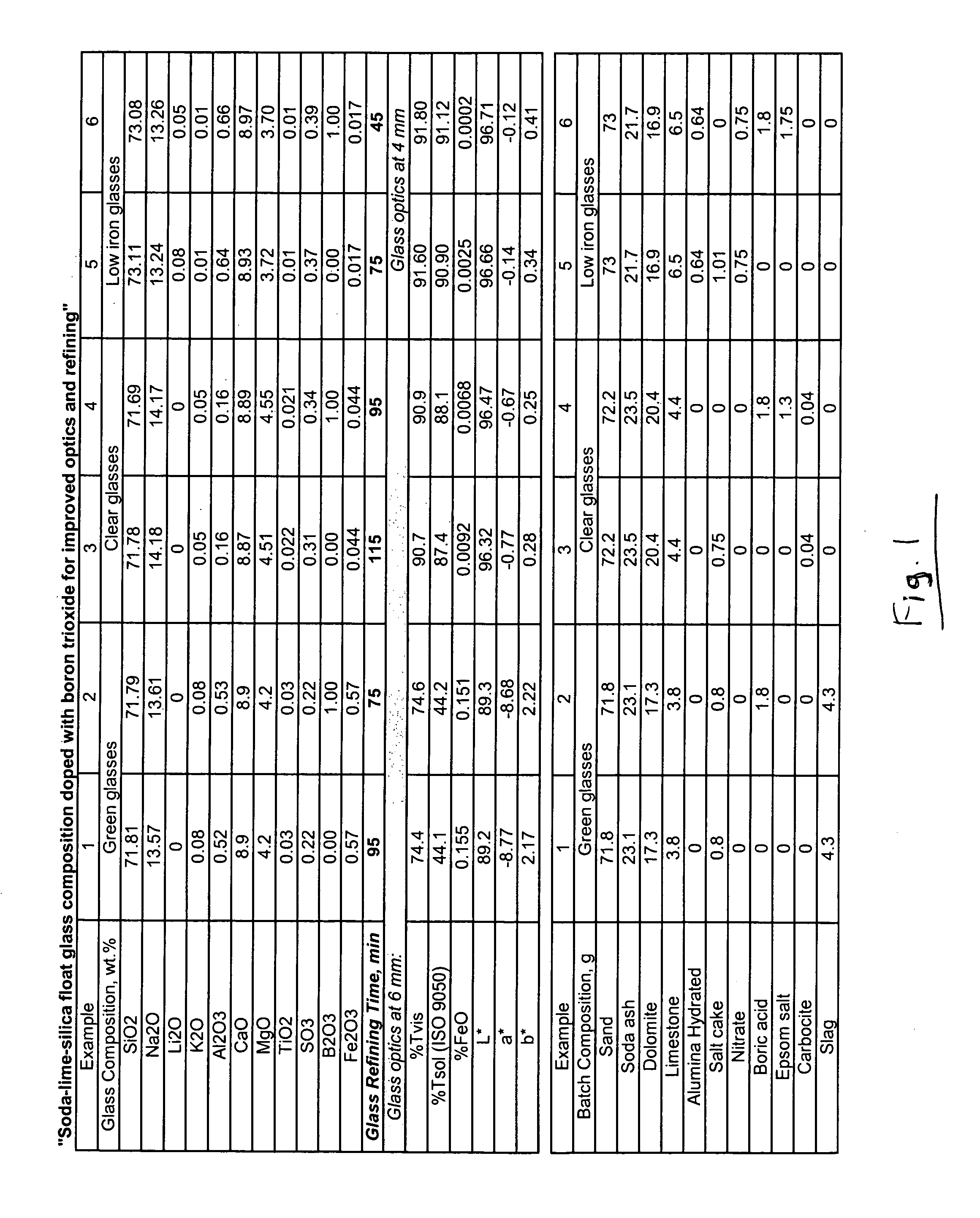Method of making glass including use of boron oxide for reducing glass refining time
a technology of boron oxide and glass, applied in the field of glass composition, can solve the problems of increasing production costs, decreasing thermal efficiency, and not providing, and achieve the effects of reducing refining time, increasing refining rate, and substantially reducing glass refining tim
- Summary
- Abstract
- Description
- Claims
- Application Information
AI Technical Summary
Benefits of technology
Problems solved by technology
Method used
Image
Examples
examples 1-6
[0021]FIG. 1 illustrates the batch components, final glass compositions, and optics associated with Examples 1-6 of the instant invention. In FIG. 1, the batch components (e.g., sand, soda ash, boric acid, etc.) are at the bottom one third of the figure, the final glass composition components (e.g., SiO2, Na2O, B2O3, etc.) are at the top one third of the figure, and the optics (e.g., visible transmission, % Tvis, L*, a*, b*, etc.) associated with the final glasses are set forth at the middle portion of the figure. It will be appreciated from FIG. 1 that the glasses of Examples 1-2 were green glasses (note the rather high iron content of these glasses compared to the others), the glasses of Examples 3-4 were clear glasses with fairly neutral color, whereas the glasses of Examples 5-6 were low iron highly transmissive glasses (note the very low iron content and very high visible transmission characteristics).
[0022] Examples 1-6 illustrate that the use of boric oxide in the batch and ...
PUM
| Property | Measurement | Unit |
|---|---|---|
| Fraction | aaaaa | aaaaa |
| Fraction | aaaaa | aaaaa |
| Fraction | aaaaa | aaaaa |
Abstract
Description
Claims
Application Information
 Login to View More
Login to View More - R&D
- Intellectual Property
- Life Sciences
- Materials
- Tech Scout
- Unparalleled Data Quality
- Higher Quality Content
- 60% Fewer Hallucinations
Browse by: Latest US Patents, China's latest patents, Technical Efficacy Thesaurus, Application Domain, Technology Topic, Popular Technical Reports.
© 2025 PatSnap. All rights reserved.Legal|Privacy policy|Modern Slavery Act Transparency Statement|Sitemap|About US| Contact US: help@patsnap.com

